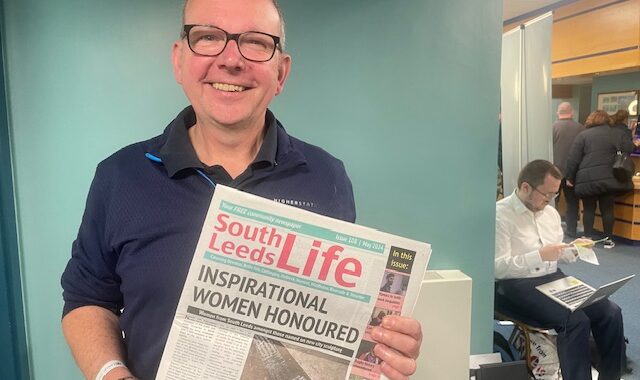ICNN member South Leeds Life will next month celebrate a decade of being in print, and editor Jeremy Morton says the print edition is proving to be a lifeline for the digitally disenfranchised in the inner city community he covers.
“Many people aren’t online and if they are, they may not necessarily find South Leeds Life. There is a big digital deficit, so this is a good way of putting local community news and information in front of people,” said Jeremy.
The publication started with 12, full colour tabloid pages, and now boasts a pagination double that – and prints 6,000 copies a month, which is distributed monthly through around 200 pick up points, such as libraries, schools, shops, mosques and community centres.
“We also went into print because we thought it would be an easier way of getting advertising, as people aren’t interested in advertising on the website,” Jeremy added. “People say they love print. Local organisations offered to support us financially as a result, and readers can pay a pound a week to support us. They value the website, but not in the same way.”
Jeremy has a number of contributors and community reporters who provide copy and photos.
“A lot of focus seems to be on the paper,” he added. “At the start of the week I’m always worried about how I’m going to fill it all, but by the end I almost always have too much. People still love seeing their name in the paper. People Tweet out photos of their cuttings in the paper, but don’t say anything about the fact that the article went online the week before!”
In the past funding to print the papers has come from direct appeals to readers for financial, saying ‘we’ve got enough for the next issue but we may not have for future ones’. “Without doing that, the paper wouldn’t still exist, and the website would have gone by the wayside too.
“Community organisations tell us they can network better and understand what other organisations are doing thanks to what we do. This is why they sponsor us.”
Jeremy’s top tips if you’re starting out:
- You’ll need to purchase/pay monthly subscriptions on an industry standard design software, such as Adobe InDesign. SLL uses QuarkXpress. You need to factor in the ongoing costs of these.
- Get a quote from several different printers for different pagination and circulation numbers.
- Don’t forget to factor in delivery costs – SLL’s are £90 per delivery..
- Think about where you will get the papers delivered to – they come on a large pallet, which may not fit into your house! SLL gets delivered to a local community centre.
- Think about how you will distribute the papers. Jeremy does most of them himself and enjoys chatting to people at pick-up points – it’s also a good source of getting stories and for interaction with the public (aka good old fashioned patch journalism!)
- Adjust the number of papers according to popularity at each pick up point
- Build it up slowly – SLL started with 12 pages, last issue was 24.
- Build some templates for your pages – you don’t have to stick to them rigidly, but they do save time rather than designing them from scratch.
- Regular contributors are useful and easy content, and they often fit templated pages. SLL has columns on local history, mental wellbeing, money advice from the Credit Union, MP’s column, local policing inspector, and an occasional disability column.




